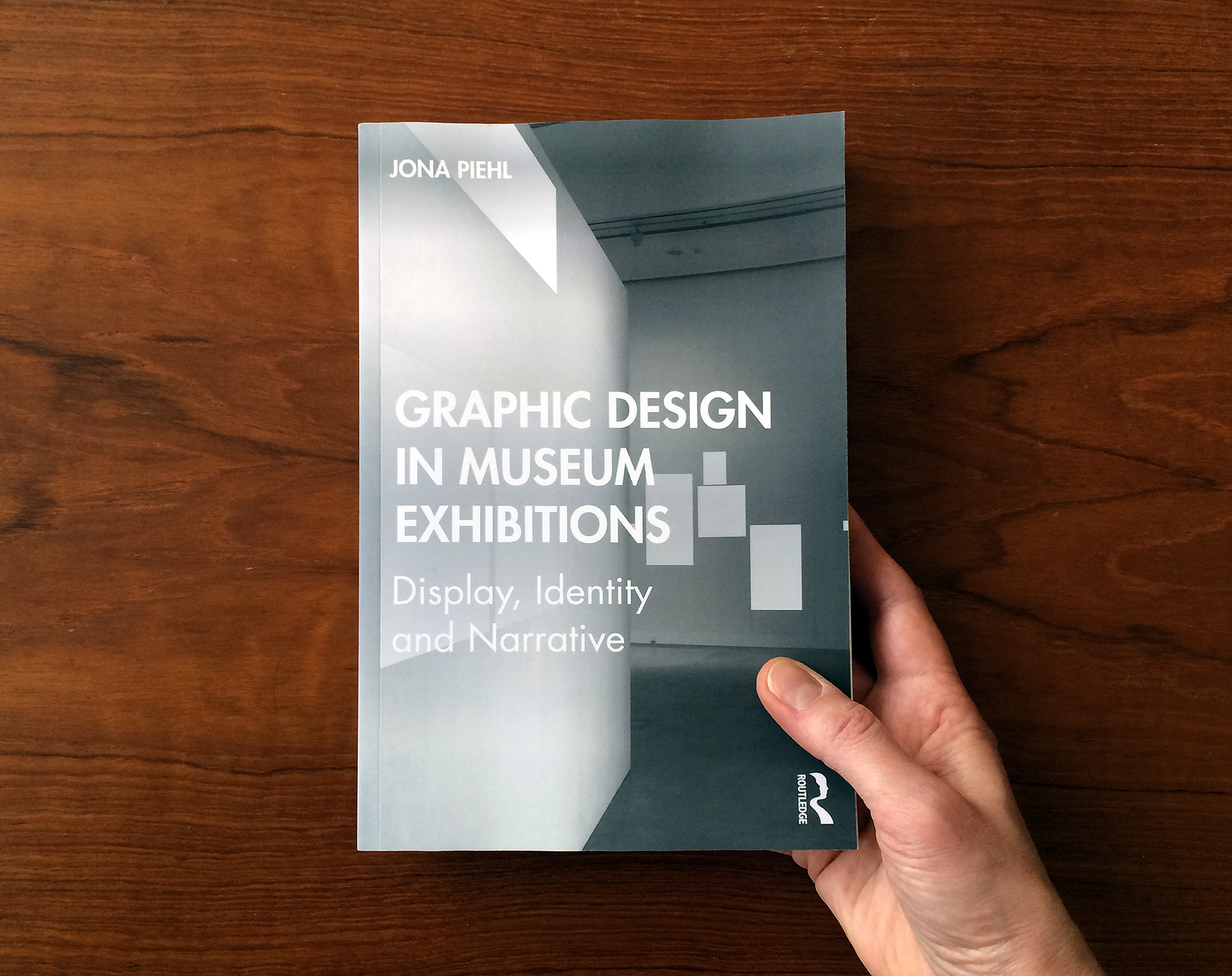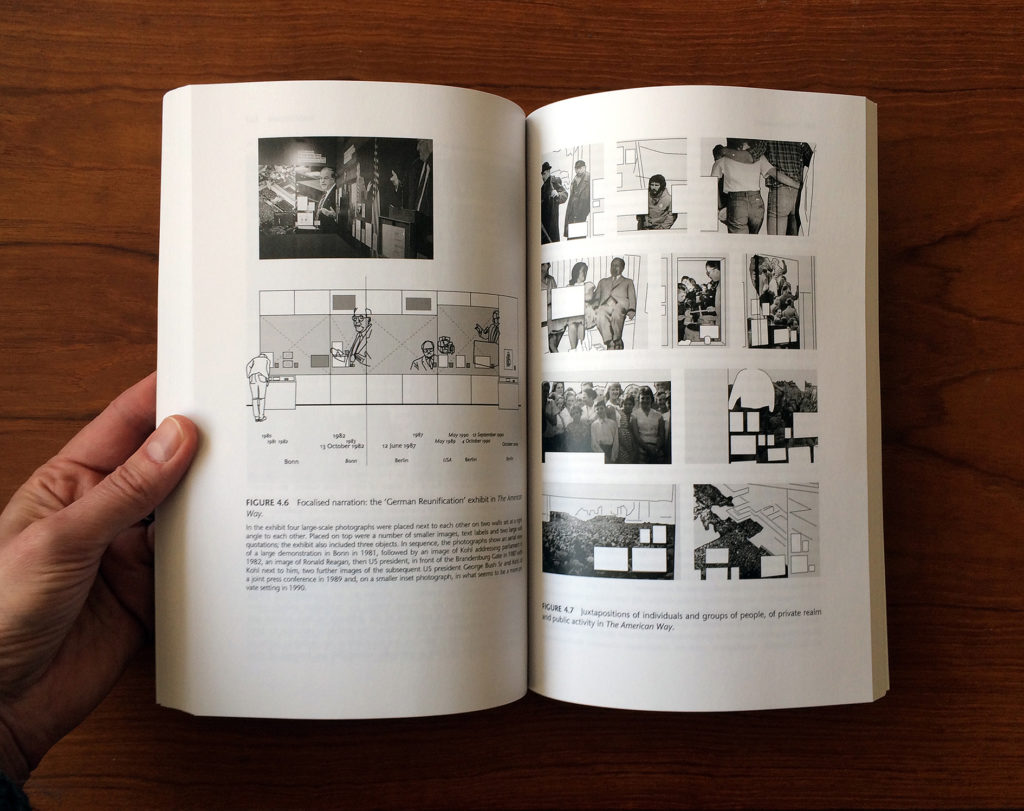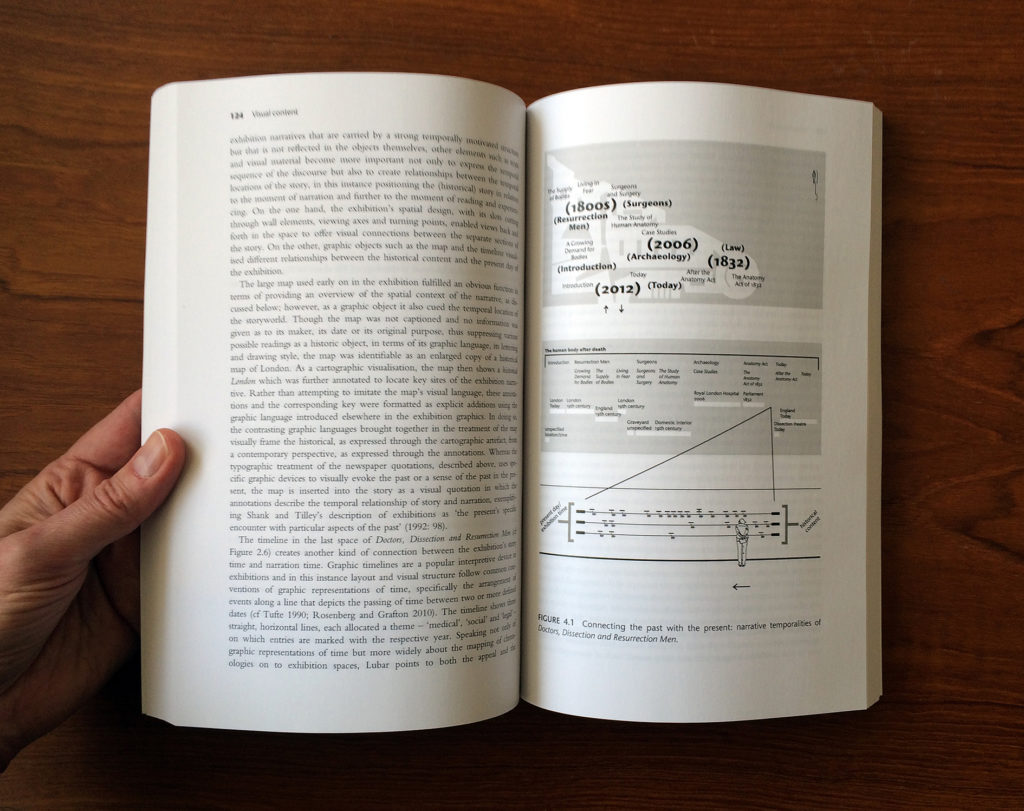
We catch up with Berlin based graphic designer and design researcher Jona Piehl, a former Narrative Environments tutor, about her new book ‘Graphic Design in Museum Exhibitions: Display, Identity and Narrative’, published by Routledge – essential reading for 2021!

What is your new book about?
It’s about the different roles of graphic design in museums: from the graphics that support the display, the orientation and navigation in content and space, to those that carry the institutional identity, to the graphics that are really content in themselves, part of the story and the exhibition-specific telling of stories.
When the project first started (as a PhD) it was very much about giving space to that narrative dimension — I set out wanting to redress what I felt was an imbalance towards graphics as carriers of information. But in rewriting the thesis as a book this got a lot more balanced, less about foregrounding the narrative roles and more about acknowledging that graphic objects always carry more than one role in the exhibition and that these roles are governed by different aims and objectives.
I am interested in how this difference can become productive in the context of an institution. In other words, how can we engage critically with exhibition graphics, actively negotiate their role in order to find the visual strategy that responds best to a specific set of objects, anticipated audience(s) and themes as well as the time and place of an exhibition…
What prompted you to write this book?
Well, the book is very much a continuation of the PhD that I started in Spatial Practices in 2011. At the time I had been working with Land Design Studio on a wide range of exhibition projects and it felt like the right moment to shift perspectives and consider exhibition graphic design not just from within practice but to step outside and reflect on its position in the wider context of museum making, on questions of collaboration, hierarchies of practice, work processes and so on.
Of course, working at Land was a result of my placement during my time with MA Narrative Environments — so, if you will, in the end, it all began here…
How did you research and gather your material?
The starting point of my discussions is the exhibition as a multimodal text, that is: what can we see, read, and experience in the gallery space. In the later stages, when writing the book, I widened the range of exhibitions to better contextualise some of the points and also to show the incredible breadth of exhibition graphics, but at the heart of the book are the three exhibitions (at the V&A, the Museum of London and the Haus der Geschichte in Bonn) that I analysed in-depth during my PhD. In terms of the data generation, I think I spent 25-30 hours in each of the exhibitions, observing, sketching, mapping, taking photographs. It was a very iterative process, which I have described as a sort of reverse engineering of exhibition graphics: I essentially repurposed the methods I knew from exhibition design practice for my research.

Who do you intend this book to be for?
Any designer that has to do with exhibition graphics but also everybody else involved in exhibition-making – especially those on the side of the museum institution!
What were the challenges of writing this book?
In terms of content, there were a couple of aspects I was grappling with throughout, for example, how do I write about exhibition graphic design?
Often exhibition graphics are written about in absolute terms (‘you must not use a typeface such as xyz’ or ‘you must not use all caps’, etc.) and I wanted to open up a more nuanced discussion whilst also acknowledging my own position in the research as a practitioner and as writing from a particular background and perspective on museums and exhibitions.
But, there were also quite practical challenges, for one, this has been a looooong project! It takes some effort to keep going and to stay focused, to avoid the temptation of turning it into a different project at every corner, to accept that it, it that sense, would just be a stick in the sand… I finished the manuscript in January last year, before the world turned upside down, and it was weird to accept that I couldn’t go back and rewrite everything. But I am glad that I have now made space for some new projects on my desk!